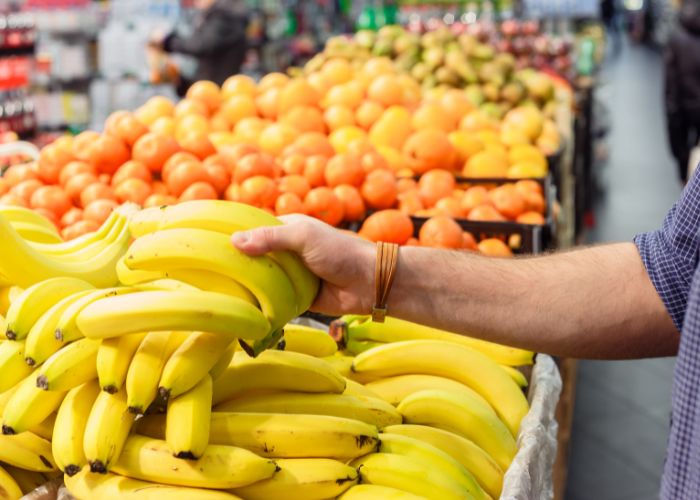MADRID – The price of food in Spain is becoming more expensive than the average for the rest of Europe and other major economies, except Germany.
The harmonised consumer price index for food (IPCA), prepared by Eurostat and which measures price developments, taking into account the purchasing power of citizens, on a basis of 100 points, indicates that the Spanish market has reached 124.13 points. This represents a growth of almost 14% compared to the 109.63 it marked a year ago. Back then, the IPCA lagged behind almost all major economies in Europe.
Related post: Supermarkets want VAT reduction to limit price increases
As a result, the shopping basket in Spain has not only become more expensive than in the rest of the large European countries but also above average. That rose 12.6% to 125.2 points.
Food inflation
The rise in energy costs, raw materials and transport, among other things, has led to food inflation in Spain, which means that distribution prices are now above countries such as the Netherlands (124.09), Denmark (122.9), Portugal (121.4) Belgium (118.99), France (116.88), Italy (116.2) or Greece (115.89) among others.
Spain is now slightly below Germany, whose ICPA has risen to 120.1 points, although it is below the European average, which is set at 125.2 points. Above the European average have traditionally been cheaper countries, but have now suffered sharp price increases, such as Hungary, with an ICPA of 160.53; Lithuania with 148.3; Bulgaria with 145.82 and Latvia with 144.1.
Competitiveness
Despite the sharp rise in food prices, Spanish food distribution remains one of the most competitive in all of Europe. The existence of multiple factors in the business means that it is not a very profitable market and where the only alternative is to adopt an aggressive cost reduction policy to increase market share and margins, which is impossible amid this wave of price increases.
Profitability of Spanish supermarkets
According to the calculations of elEconomista.es with data from the commercial register, the average profitability of the main Spanish supermarkets in 2021 was 3.03%. Moreover, if the distribution margins between 2021 and 2020 are compared, it can be seen that the main Spanish supermarkets have lost profitability, except for Carrefour. For example, the French chain went from 3.71% in 2020 to 4.6%.
Carrefour, the most profitable
Focusing on 2021 data, Mercadona ended the year with a turnover of €27,819 million and a net profit of €680 million, meaning it had a profit margin of 2.4%. According to the latest data from KantarWorlpannel, the Valencian chain is the leader in Spanish distribution with more than 25% of the market.
However, the company did not outperform Carrefour’s 4.6% return, even though the chain’s sales and profits were lower. For example, Carrefour closed last year with a turnover of €8,241 million and a profit after tax of €382.7 million.
Lidl and Eroski
In contrast, Lild achieved a net profit of €150.8 million on a turnover of €4,825 million. This corresponds to a distribution margin of 3.1%. Eroski had a return of 2.05% in 2021 thanks to a profit of €105 million and a sales volume of €5,116 million.
Dia and Alcampo
In the case of supermarket chain Día, there is no profitability in 2021 due to its losses, which amounted to €257.3 million, which, despite everything, represents a decrease of 29.3% compared to the previous year. In Alcampo, the last data published in the register is from 2020, when it achieved a net profit of €112 million and a turnover of €3.321 million, setting the profit margin at 3.3%.
Also read: Spain wants a healthy food shopping basket at a fixed low price


